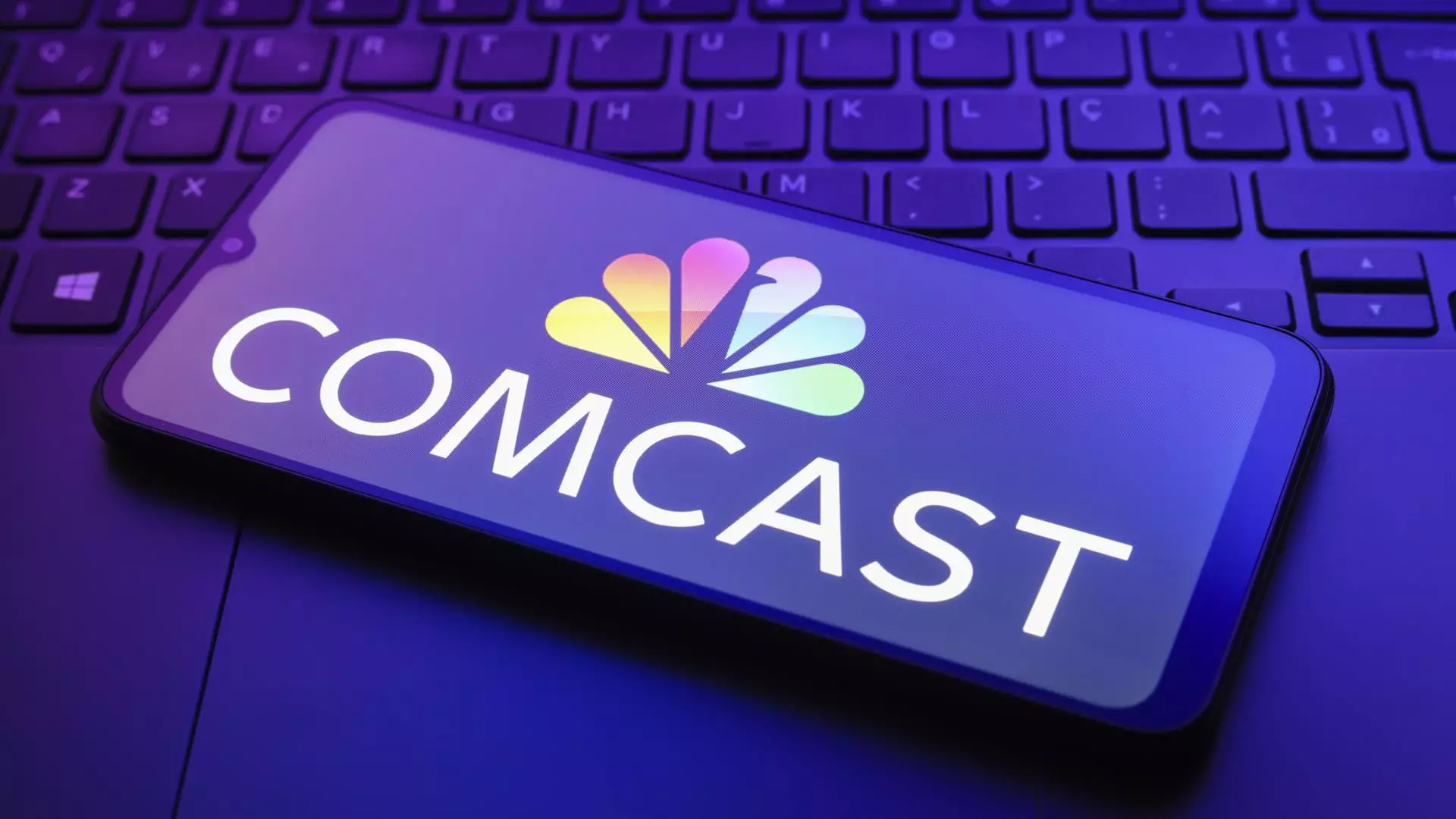The advertising landscape is evolving, and Comcast’s recent announcement about launching the Universal Ads platform demonstrates a strategic move to reshape how ads are bought and sold. As smaller and medium-sized businesses struggle within the complexities of traditional advertising avenues, Comcast aims to streamline the buying process, especially for video content on its streaming platforms. This initiative is poised to entice advertisers away from the allure of social media giants, marking a pivotal shift in advertising dynamics as traditional media companies fight for relevance and revenue amidst fierce competition.
Universal Ads, set to launch in the first quarter, promises to simplify the often convoluted ad purchasing process that many advertisers, particularly smaller entities, face. Mark Marshall, NBCUniversal’s chairman of global advertising and partnerships, highlights this initiative as an opportunity to engage a demographic of advertisers that has been historically neglected by traditional media platforms. With partnerships spanning major media companies like A+E, Fox Corp., and Warner Bros. Discovery, Universal Ads seeks to create a comprehensive marketplace where businesses can easily connect with premium content.
James Rooke, president of Comcast Advertising, pointed out that the existing process can seem daunting compared to the ease with which advertising space can be purchased on platforms such as Meta and TikTok. By mimicking these simpler processes, Comcast hopes to attract businesses that have primarily relied on social media for advertising. The introduction of automated tools, especially those powered by artificial intelligence, will further empower smaller companies by reducing the burden of ad production, thus democratizing access to advertising opportunities.
Despite the growing prominence of streaming and traditional media, the reality is that social media platforms continue to dominate advertising revenue. Major corporations, like Meta, have established vast networks of active advertisers, while traditional TV struggles to maintain market share. Comcast’s Universal Ads platform aims to readdress this imbalance by creating more favorable conditions for advertisers seeking alternatives to social media.
Marshall notes that while traditional media has often been regarded as a reliable but limited platform, there’s an emerging desire among advertisers to diversify away from these juggernaut companies. The challenge, he explains, lies in bridging the gap between the appealing simplicity of tech platforms and the more complex traditional advertising landscape. The Universal Ads platform is an attempt to meet this challenge head-on by providing a user-friendly interface that can level the playing field for smaller advertisers.
The launch of Universal Ads could have significant implications not just for advertising revenue, but also for the wider media ecosystem. With customers increasingly gravitating toward streaming services and online platforms, Comcast’s strategy indicates a recognition of the shifting consumer landscape. By aligning the interests of traditional media with those of smaller advertisers, the initiative could bolster the resilience of legacy advertising outlets against the ever-expanding digital horizon.
Interestingly, data reveals that traditional TV remains crucial to advertisers, especially during live events like the Super Bowl, where ad placements demand hefty price tags. However, as the media landscape continues to evolve, the need to adapt to new trends and consumer behaviors is paramount. As Rooke suggests, the time has come to take proactive measures to tap into growth areas rather than compete within a shrinking market.
Central to the success of the Universal Ads initiative is collaboration among various media stakeholders. As pointed out by Amy Leifer of DirecTV, the digital advertising space has often been fragmented, making it difficult for smaller players to gain a foothold. By creating a unified front, Comcast and its partners aim to not only increase overall ad revenue but also to foster an environment where small and medium-sized businesses can thrive.
The advertising sector is at a crossroads, and grassroots-level connections to audiences via premium content will be pivotal in attracting new advertisers. This is particularly relevant in an era where flexibility and efficiency are increasingly sought after, as noted by stakeholders in the industry. By providing the tools necessary for businesses to effectively connect with viewers, Comcast’s initiative may very well redefine how traditional media adapts to modern marketing needs.
While Comcast’s ambitious Universal Ads platform presents promising opportunities, the company will face significant obstacles in execution. With fierce competition from established digital platforms that consistently attract substantial ad spending, capturing market share will not be an easy task. Furthermore, as the media industry experiences rapid changes and consumer preferences continue to evolve, adaptability and responsiveness will be critical to ensuring long-term success.
Comcast’s forthcoming Universal Ads platform marks a notable step in rethinking the dynamics of advertising within the traditional media landscape. By prioritizing accessibility for smaller businesses and streamlining ad purchase processes, Comcast could very well redefine advertising in an era increasingly dominated by digital giants. However, the challenges ahead are significant, and the company must navigate this vast, uncharted territory with caution and foresight.

